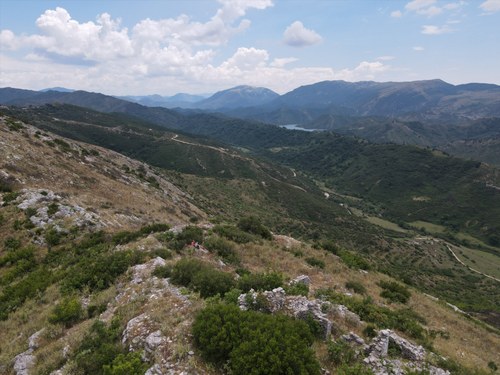
In recent years several international research projects have carried out in Chaonia, but most of all has been focused on the archaeological excavations of some important ancient cities, such as Butrint and Phoinike. However, there are numerous smaller sites, especially along the Ionian coast, that are still waiting to be fully understood, also because they lack in modern archaeological and topographical survey. These are mostly fortified settlements of various sizes, located on dominant hills, often settled for a long period, only partially known by out-of-date documentation, which have not yet been considered within a systematic project conceived with homogeneous criteria.
The FortNet Project aims to design and create an articulate geographical database, based on web technologies accessible at various levels of depth, in order to fulfil both historical-archaeological research purposes and to offer a shared tool for the protection and enhancement of the cultural heritage in a region particularly sensitive to sustainable tourism issues. While the main archaeological sites are already well integrated into the tourist circuit, the smaller ones struggle to get out of the shadow, not only in relation to large flows, but also in relation to local population, sometimes marginalised by the action of academic research: one of the main purposes regards the issue of involving local people in the processes of “production” of knowledge, and therefore of protection and enhancement of cultural heritage.
Diachrony is a second important aspect of the project. The area under examination, given the limited available data, seems to have experienced an important settlement phase at the end of the Bronze Age and during the early Iron Age. Today there are two elements that deserve particular attention in this matter: on the one hand, the almost total lack of Mycenaean finds both on the coast and along the inland routes, which completely differs from what we know, for example, for the nearby Thesprotia; on the other hand, the lack of functional tools for dating archaeological remains in those few publications dealing with this subject, which are mostly based on the comparison of construction techniques using rough stones, whose very nature makes them scarcely reliable.
The Hellenistic phase is more evident in some sites of particular interest, such as Sopot, especially when it is characterised by the construction of monumental wall circuits. Other sites, such as Panormos (probably to be identified with the bay of Porto Palermo) and Chimera (present-day Himara), are better known from historical and epigraphic sources than from their archaeological evidence. In this phase, the coastal area follows settlement dynamics that are comparable to those observed in central Chaonia. From an archaeological point of view, the Roman phase is more elusive, probably due to the progressive abandonment or depopulation of hilltop settlements, that is likely to connect to seasonal frequentation in the context of pastoral economy.
The post-ancient phases are traditionally less investigated in this region, and this is even more evident along the coastal strip. Once again, the lack of detailed fieldwork studies has created an impressive void in the general knowledge almost until to the contemporary age. Another important goal of this project is to offer, as far as possible, particular attention to these periods.